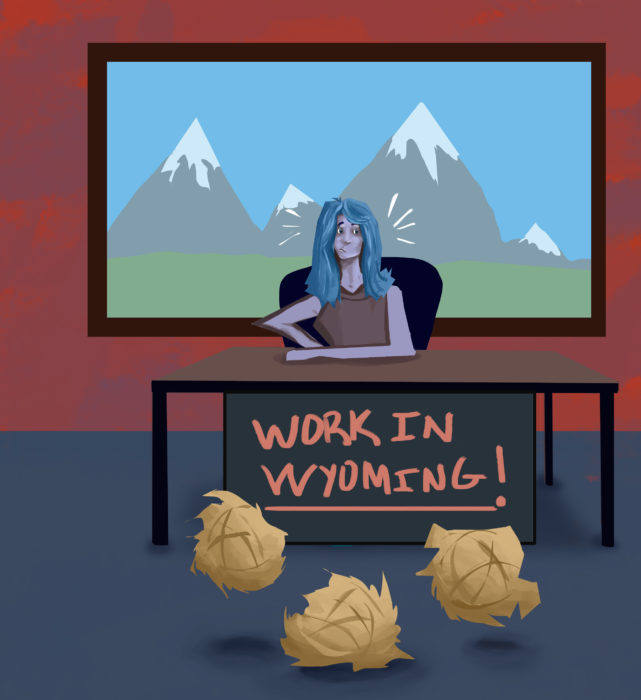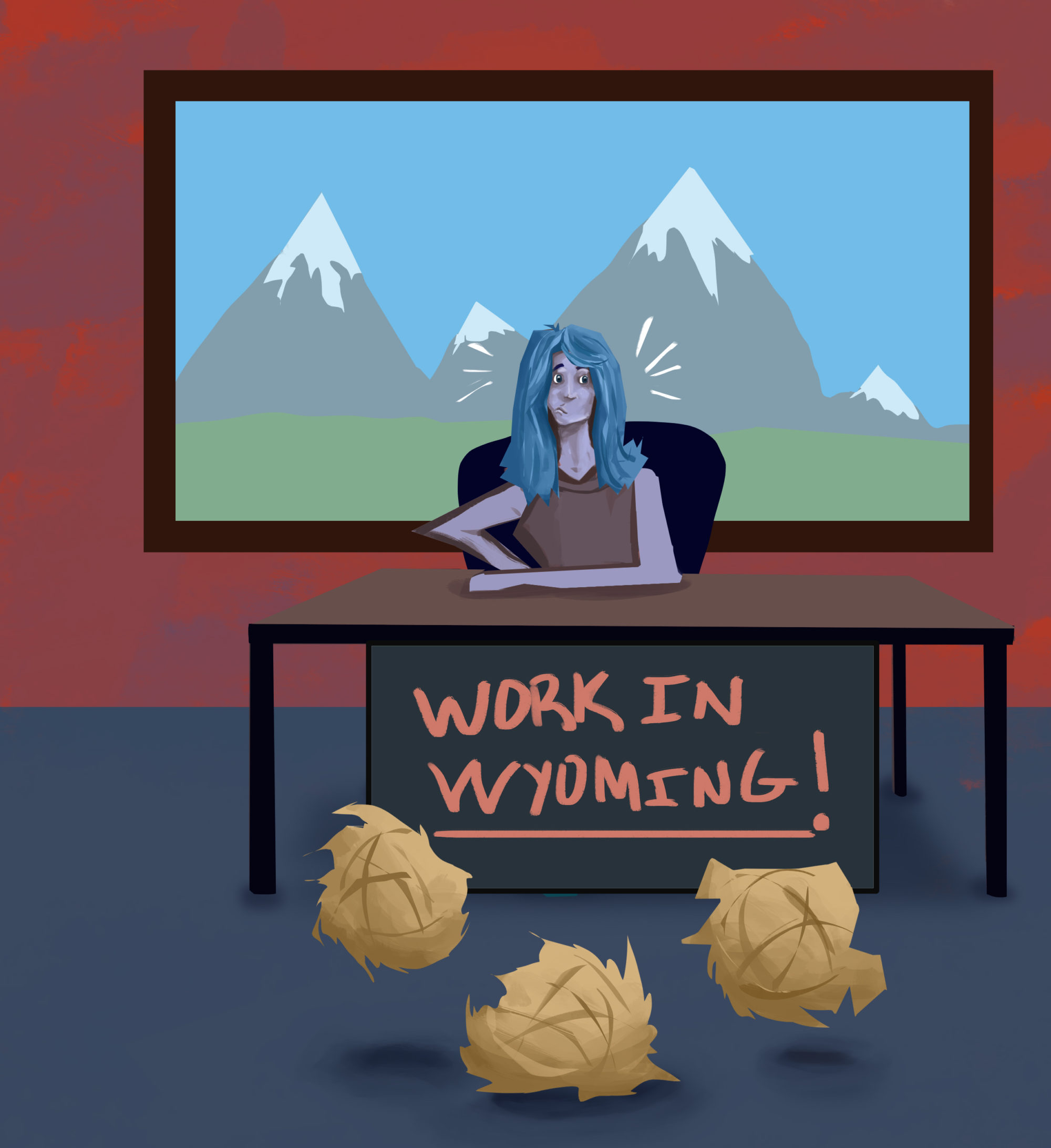
Booms and busts are embedded in the fabric of the American West, from gold rushes and timber bonanzas that left ghost towns in their wake to more recent oil and gas fluctuations. Alas, while many Western states are enjoying an era of growth fueled by tech startups and the service economy, people are leaving Wyoming for more prosperous pastures. And in the nation’s least populous state, each exit has an impact.
Wyoming lost 1,200 residents between July 2017 and July 2018, according to U.S. Census Bureau estimates. It’s the third consecutive year Wyoming’s population has fallen — between 2016 and 2017, another 7,900 people left. For a state with a population of just over 577,000, economists say the decline makes a dent.
Much of the migration helped boost populations to record numbers in neighboring states.
“Anytime Colorado is booming, it attracts many of our workers,” said Wenlin Liu, chief economist for the state’s Economic Analysis Division.
It’s not just Colorado. Idaho and Nevada were the fastest-growing states in the U.S. last year. Utah’s economy is on a tear, and prosperity in the West Coast states is luring college graduates and workers in high-paying service industries. Wyoming’s oil and gas workers might have better luck in New Mexico or Texas, and its coal miners aren’t having much luck at all; Cloud Peak Energy, the state’s third-largest coal producer, filed for bankruptcy in May. Many of those leaving Wyoming in recent years have been laid off coal miners.
“[Population decline] doesn’t happen in a vacuum,” said Robert Godby, director of the Center for Energy Economics and Public Policy at the University of Wyoming. “People are simply finding better opportunities elsewhere.”
Joy Shada moved to Cheyenne in 2013 after her husband found work with the tobacco producer Altria.
“It was not our first choice, but we needed employment,” she said.
When they arrived, however, Shada loved the state’s wide-open spaces and natural beauty. But her husband traveled a lot in harsh weather, which was taxing on him and worrisome for her, so when the opportunity to relocate to Shada’s hometown in Roseville, California, presented itself in 2018, the couple jumped at the chance. “I always called Wyoming my temporary home,” she said. Shada is now trying to sell her ice scrapers and winter windshield guards online.
The crux of Wyoming’s population decline isn’t much different from what turned once-bustling mining and timber communities into withered ghost towns a century ago. Extractive resources served as the economic basis of these communities; when profits sank or resources dried up, townsfolk packed up and headed elsewhere.
Similarly, tumbling natural gas and coal prices in recent years have sent Wyoming workers packing, Liu said.
Wyoming is the eighth largest crude oil producer in the nation, and produces about 40 percent of all coal mined in the United States. In 2017, it was one of the top ten natural gas-producing states in the nation, according to the U.S. Energy Information Administration. Prices for those resources sank between 2014 and 2016, with oil prices dropping as much as 50 percent, natural gas as much as 30 percent and coal by 20 percent.
“Because we are so dependent on extraction, our economy depends on the price fluctuation. Anytime the price is higher, the economy is strong. If the price is lower, Wyoming’s economy suffers,” Liu said.
Compounding the issue, he said, is the fact that the extraction industries have gotten more efficient in recent years, and thus rely on fewer workers. So even when prices rebound, the labor force doesn’t.
The extraction industries create a ripple effect across the state, says Godby. Construction jobs tied to extraction resources take a hit when fuel prices drop, and tax revenues decline while demands on service can remain steady.
“It makes it more difficult and costlier to provide public services,” he said. Whether there are 30 or 20 kids in the classroom, for instance, you still have to pay the teacher.
There’s another issue, one Shada alluded to. While living in Cheyenne, she “did love the small-town feel” — of the state’s biggest city. Godby says that, since Wyoming lacks an economic center like Denver or Salt Lake City, it doesn’t have the economic diversification that can soften the blow from a downturn in one sector.
“There’s no easy solutions,” said Godby. “It’s a chicken and an egg problem.”
To counteract the loss of people, Wyoming is focusing on developing a more diverse economy. Economic development officials are convinced the state’s natural spoils will keep newcomers around — they just need a job.
“When we have the jobs, people do like the Wyoming lifestyle, and they like the communities, and they want to move here,” said Robert Briggs, board president of the Wyoming Economic Development Association.
Task forces have identified everything from tourism (Wyoming’s current number-two moneymaker) to blockchain infrastructure as the next job clusters worth emphasizing. Health care has received focus — though it depends on a preexisting population base. Last session, Wyoming’s legislature passed bills to improve broadband internet access and to establish trade offices. The state is even subsidizing air travel. Make it easier to discover Wyoming, boosters say, and employers will fall for its workers.
“One of the things that Wyoming really prides itself on is the independence of the people, their practicality and work ethic,” Briggs said. “And employers comment on this. The quality of our workers is a plus.”
But much of the state’s population doesn’t have the skills needed for today’s workforce demand. Students were for years pushed to pursue bachelor’s degrees, leaving a shortage of skilled tradespeople. Adding insult to injury, many who did attain four-year degrees subsequently left the state; just 27.7 percent of Wyoming’s over-25 population holds a bachelor’s degree or higher, compared with 32 percent nationwide.
Briggs said the range of solutions that state and local leaders are considering to diversify the economy and ensure a ready workforce as businesses grow and relocate have one thing in common: “We’re making an investment in people.”
Time will tell whether that investment will be enough to keep those people around, harsh winters and all.

